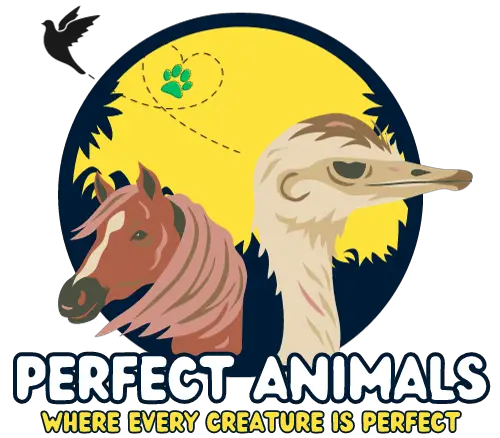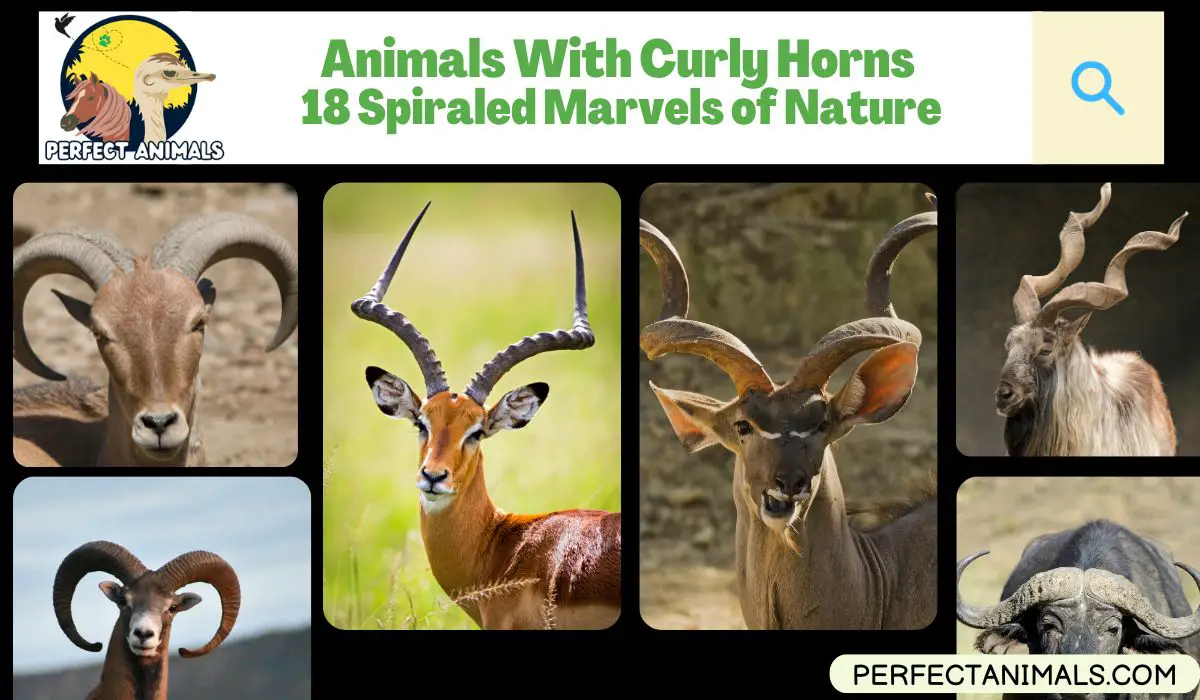Horns come in a variety of shapes and sizes in the animal kingdom.
Many animals grow straight horns that protrude from their heads, while others develop curved or spiral horns that twist and turn in intricate patterns.
The animals that possess these curled horns are definitely a sight to behold.
In this article, we will explore some of the most remarkable animals with curly horns.
From wild mountain goats to African antelopes, these horned creatures have distinctive looks that set them apart.
We will learn about what purpose the curly horns serve and highlight some key facts about each animal’s characteristics and habitat.
Get ready to discover some of the most fascinating horn designs that have evolved in mammals.
The twists and coils of these curly creations happen for specific reasons and help the animals survive in their environments.
As we explore these horned animals, you’ll get a sense of nature’s wonder and the amazing diversity of life on Earth.
Types of Animals With Curly Horns
Markhor
The markhor is a type of wild goat native to Central Asia.
Markhors are distinguished by their striking, corkscrew-shaped horns, which can grow up to 64 inches long.
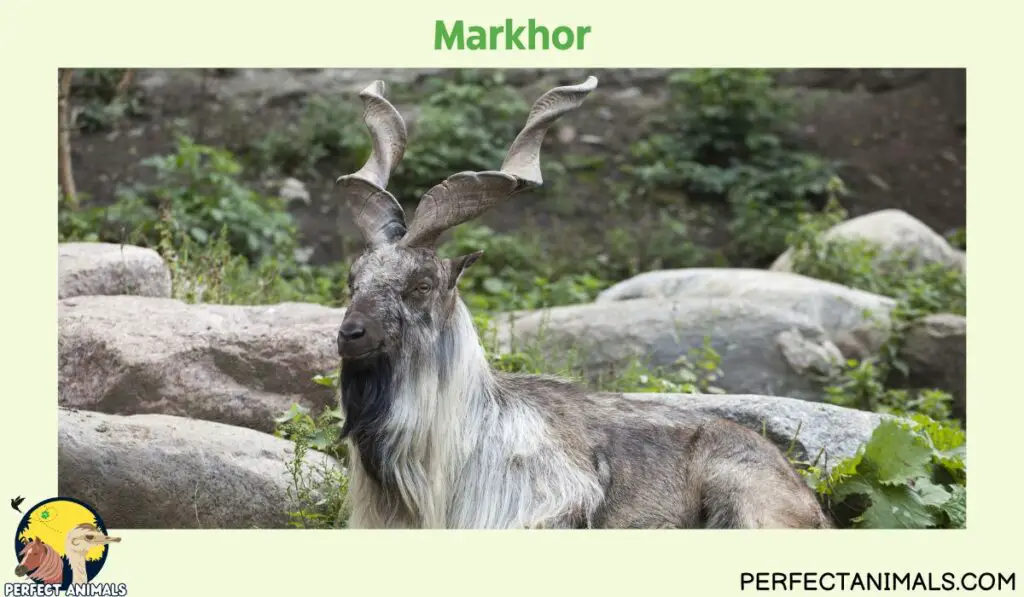
As the male markhor ages, his horns continue to coil more tightly.
The horns provide self-defense, and males use them for sparring with rivals.
Markhors inhabit mountainous regions, where they adeptly scale steep cliffs and slopes.
Unfortunately, extensive hunting has left the markhor endangered.
Their population is now slowly rebounding under new conservation efforts.
Related Article – Deer in North America
Mouflon
The mouflon is a wild sheep still found in certain mountainous regions of Europe and Asia.
The male mouflon develops large, curved horns that spiral out and back from his head; females have much smaller horns.
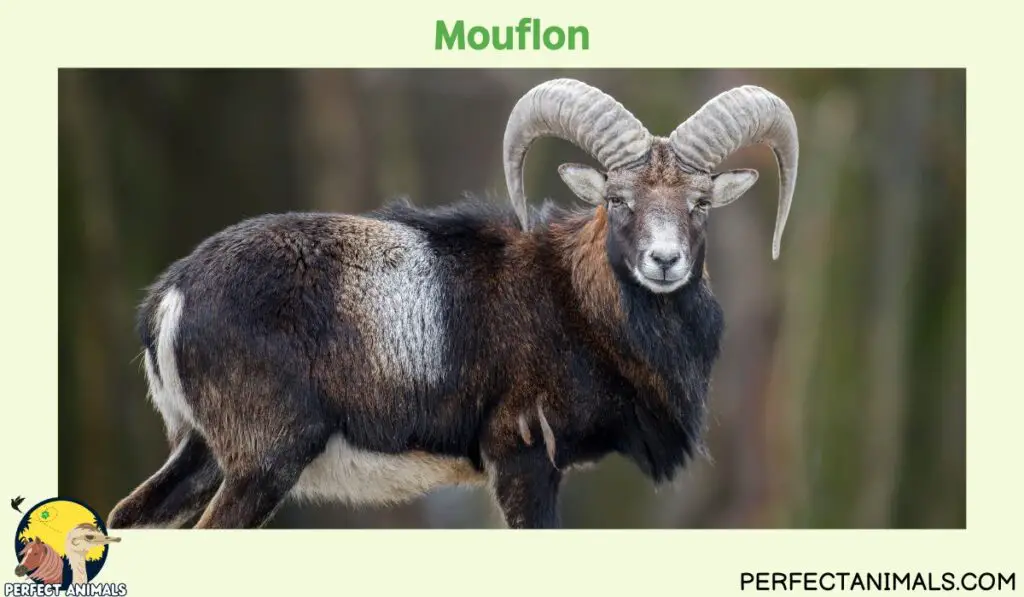
A mouflon’s horns provide self-defense, competing for mates, and establishing status in the group.
Mouflons inhabit mountain meadows and grasslands.
Capable mountaineers, seek safety from predators on steep, rocky slopes where they can watch for danger.
Once at risk of vanishing, mouflon numbers have increased recently thanks to game laws protecting them.
Big-horned Sheep
North America’s big-horn sheep possess some of the most iconic swept-back horns in the animal world.
Their curved horns protrude up to a yard from males’ heads.
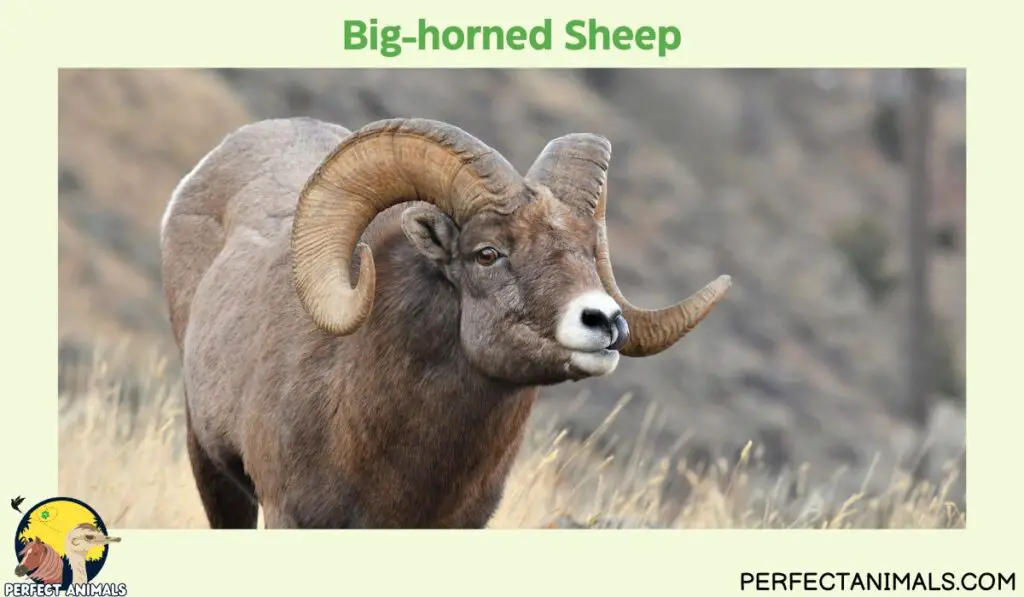
While females have thinner, shorter horns, a big-horn’s horns continue growing throughout life, with yearly layers adding to the core.
Big-horns attack predators by lunging horns-first.
Their horns equip them for combat with rivals during the fall rut. Equally agile scramblers, big-horns occupy rugged mountains and badlands through the western US and Canada.
Careful wildlife management assists in stabilizing populations.
You May Also Like – 18 Amazing Animals With Long Necks
Kudu
The majestic greater kudu bull stands out in the bush with his stunning spiral horns that twist and curl two to three times.
These regal antelopes inhabit woodlands and scrublands of eastern and southern Africa.
Males develop long, oval-shaped horns that can reach up to 72 inches.
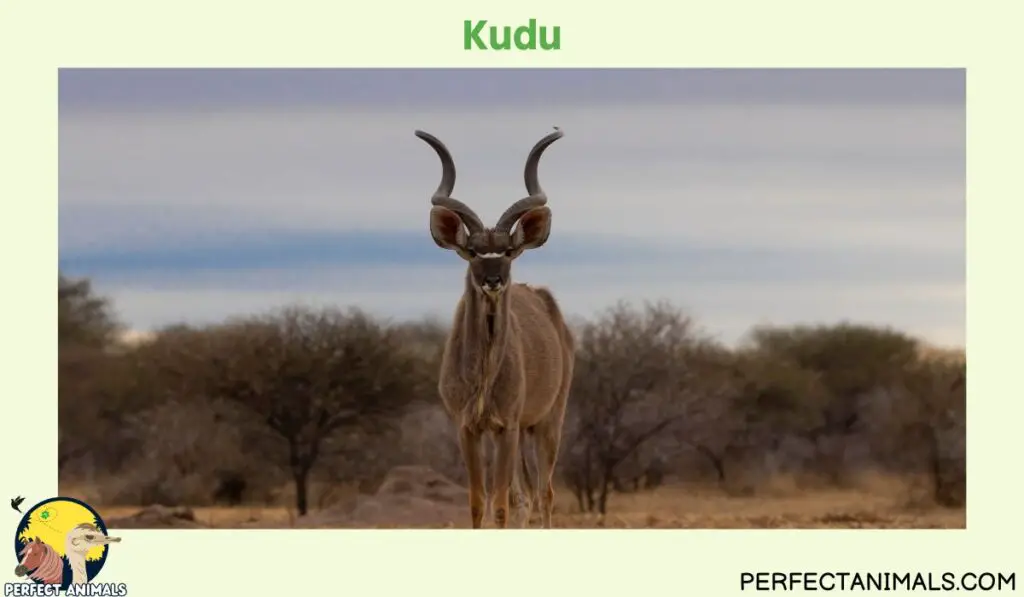
Females have thinner, shorter horns. Kudus use their horns to defend themselves, spar with other males in dominance battles, and attract mates.
To withstand clashes, their horns feature a bony honeycomb center covered by keratin.
Greater kudus are nimble jumpers and fast runners able to reach speeds over 30 mph, aiding their escape from lions, leopards, and African wild dogs.
While still abundant, habitat loss has reduced some kudu populations.
Impala
The quick and agile impala dazzles with slender, lyre-shaped horns borne only by males.
These small-sized antelopes display two shiny black horns curving back and then hooking forward nearly parallel to each other.
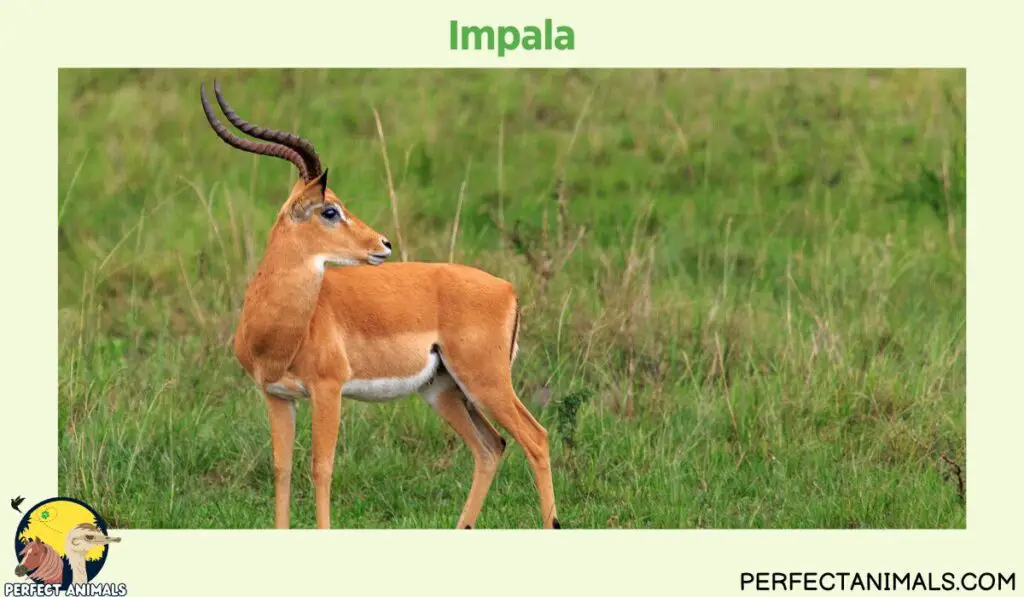
During the breeding season, male impalas use their horns to establish territory and dominance through wrestling contests with rivals.
With space secured, they can attract more female mates to their harems.
Impalas occupy savannas and woodlands of eastern and southern Africa in large herds, which provides safety from predators like lions, leopards, cheetahs, and African wild dogs.
Expert jumpers and fast sprinters, impalas can rapidly dodge threats.
Wildlife conservation efforts have assisted impala numbers to remain stable.
Asian Water Buffalo
The Asian water buffalo exhibits extremely large swept-back horns that span over 6 feet tip to tip on mature bulls.
This heavyset bovine displays dense bone horns that curl sideways and then taper to pointed tips.
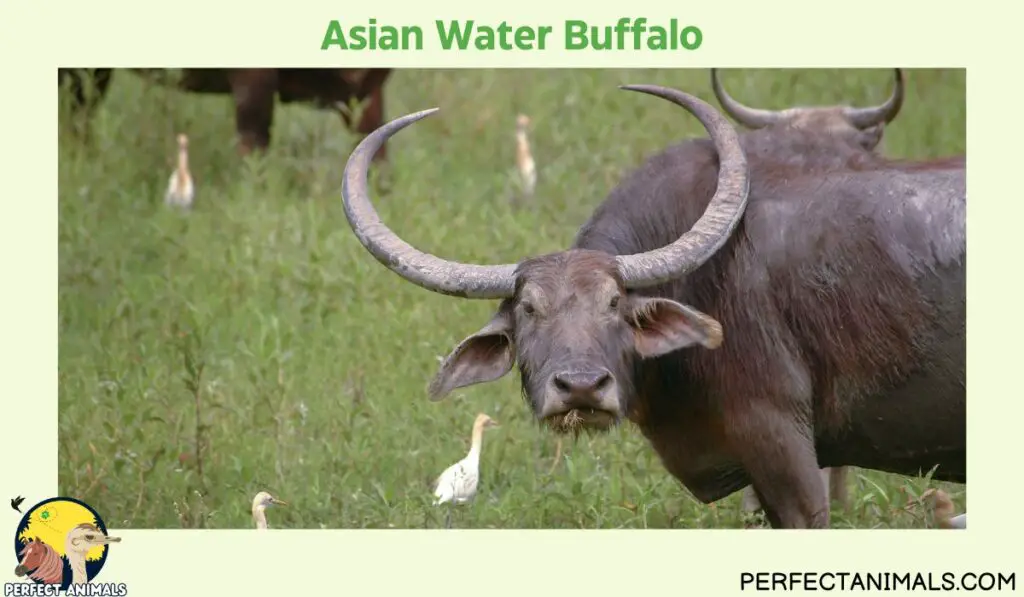
Besides combat with other bulls, males use horns to protect themselves from tigers, lions, and crocodiles while wallowing in waterholes.
Water buffaloes mainly live in India, Southeast Asia, and China.
Living in floodplain forests and near rivers and swamps, water buffaloes spend much time submerged in water and mud to keep cool and avoid insects.
Both wild and domestic herds still exist. Wild water buffalo populations suffer from shrinking wetland habitat.
Domesticated buffaloes continue important for plowing fields and milk production across Asia.
You May Also Like – Fascinating Foxes in Tennessee
African Buffalo
The African buffalo, also called Cape buffalo, is a massive bovid featuring thick, ridged horns that sweep out and then downward to form a heavy boss shape.
These iconic horns spread over 4 feet across in mature bulls.
Both sexes carry horns, but males grow the largest, utilizing them to defend themselves from lions, defend calves from predators, and battle other bulls for dominance.
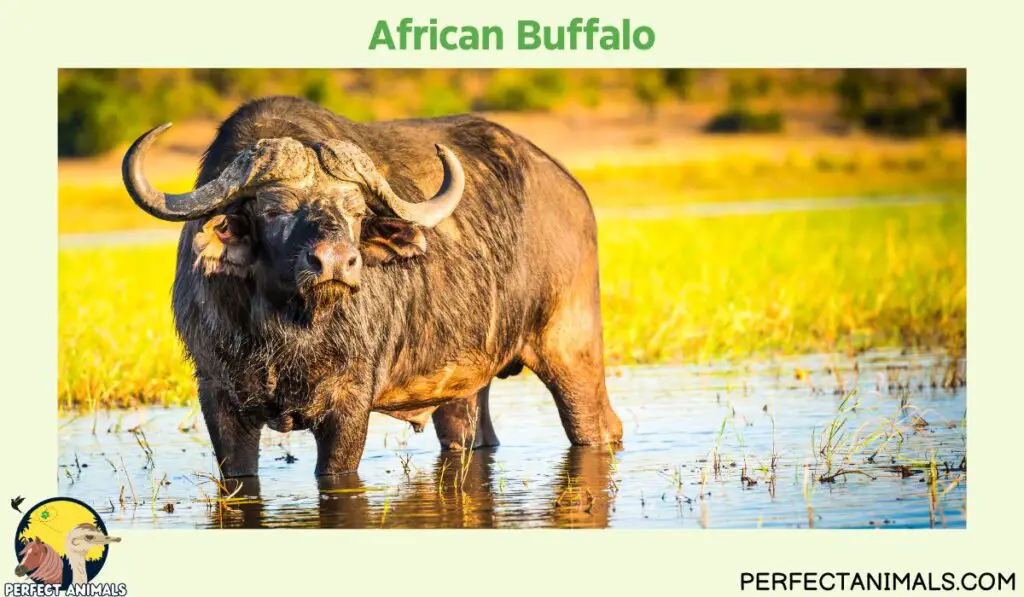
During fights, they go horn-to-horn, pushing hard to overwhelm their opponent.
African buffaloes inhabit forests, bushlands, and savannas of sub-Saharan Africa in large herds up to 1,000 strong.
Their safety comes from power in numbers against lions, leopards, and hyenas.
Unfortunately, diseases passed from cattle have caused some population declines.
Still, strong conservation efforts assist in maintaining stable numbers of these dangerous beasts that no predator dares confront alone.
Murrah Buffalo
The Murrah breed of domestic water buffalo shows off fantastic crescent-shaped horns matching its large frame.
Native to North India, Murrah buffaloes grow dense, back-sweeping horns spanning over 6 feet at the record.
Males carry bigger, thicker horns than females.
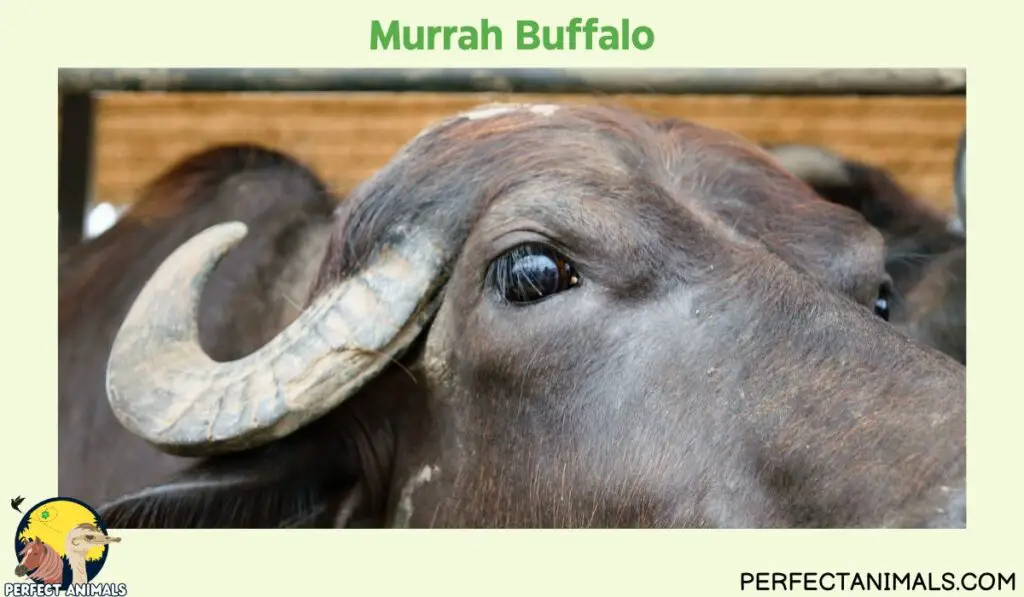
Calves inherit genetics for horn shape and growth. Murrahs put their mighty horns to use during infrequent clashes establishing group dominance.
Mostly mild-tempered bovids, Murrahs forage on grass, cereals, and aquatic plants.
Prized for its high milk production, Murrah holds the top position in India’s dairy and agricultural industries today.
Murrahs also assists Indian farmers by hauling loads and powering irrigation pumps. T
his valued breed continues efforts for genetic improvement through modern techniques ensuring it prospers for generations.
Hebridean Sheep
The Hebridean is a heritage breed of small black sheep originating from the Hebridean islands off Scotland’s west coast.
Hebridean rams feature attractive curled horns, while ewes remain hornless.
Their all-black coloration likely adapted for sheltering lambs on islands blown bare of vegetation.
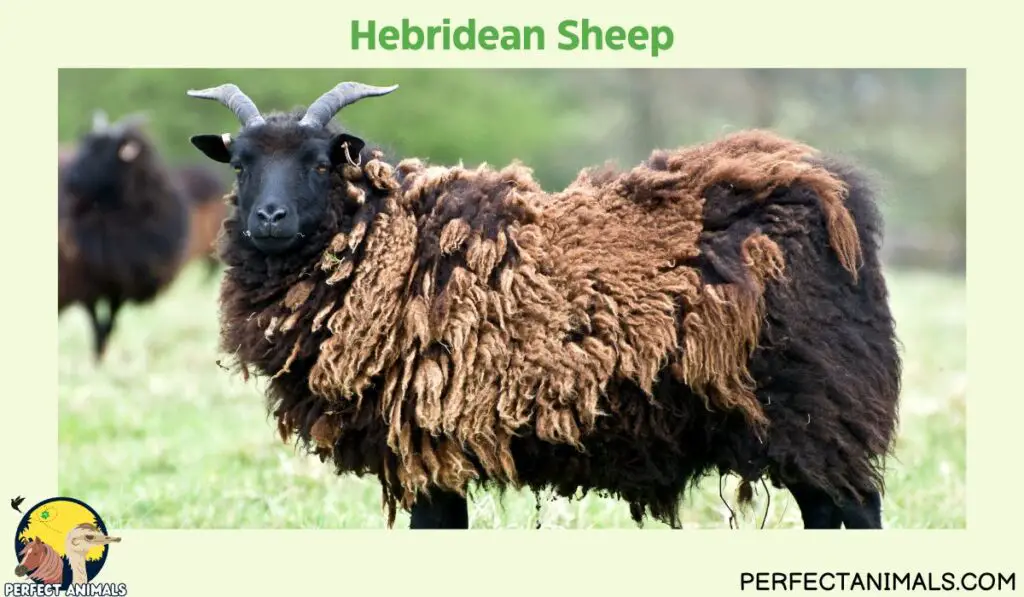
Hebridean horns arise for males asserting flock dominance, competing during rutting season, and defending against predators which historically included golden eagles.
Hardy and adept foragers on poor grazing, Hebrideans nearly vanished during 20th-century agricultural shifts favoring imported breeds.
Today, niche farmers raise Hebrideans for organic meat and wool, helping the breed re-establish itself.
Their adaptations suit them for conservation grazing which assists environmental restoration around the UK.
Thus, the Hebridean returns to its essential role in harmonious ecosystems.
Blackbuck (Indian Antelope)
The blackbuck antelope native to India displays long, ringed horns you cannot miss.
Males boast grand spiraling horns measuring over 28 inches long.
Females also carry horns that twist slightly backward.
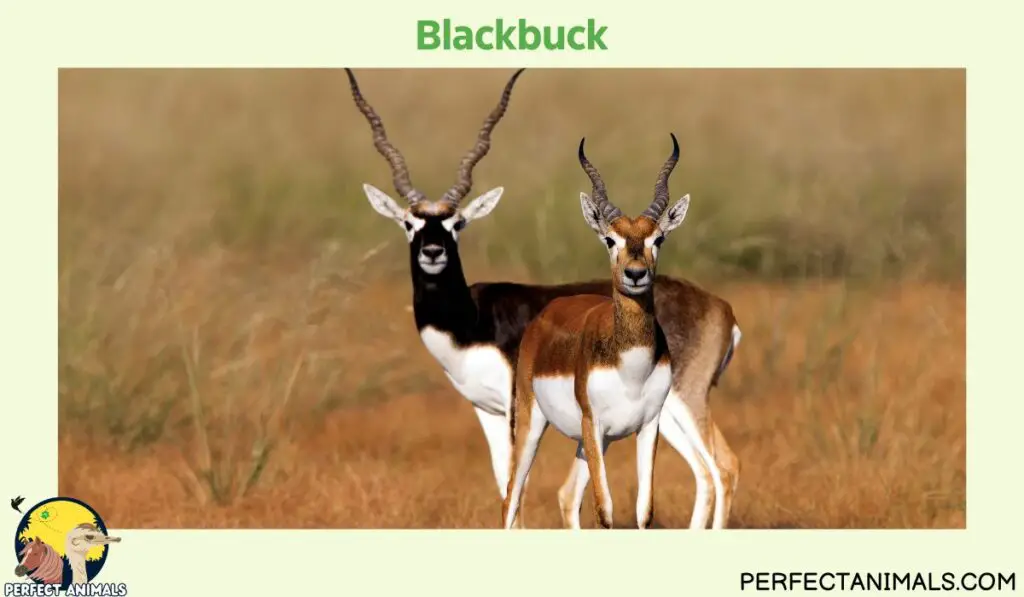
Their regal horns assist male blackbucks in confronting herd rivals and defending territory during the breeding season.
Equally essential, both sexes wield horns to protect themselves from wolves, wild dogs, and leopards.
Swift sprinters topping speeds of 50 mph, blackbucks evade predators on India’s plains and woodlands in bounds of vertical leaps spanning 8 feet high.
Due to extensive hunting and habitat loss, blackbucks’ conservation status is listed as near threatened.
Strengthened legal protections and managed relocations now expand blackbuck strongholds so they return to dotting India’s grasslands.
You May Also Like – Are Foxes Nocturnal?
Sable Antelope
The extravagantly horned sable antelope of Africa arrests attention with its scimitar-shaped horns scything back from its head.
Exceptionally long, these smooth black horns arched 90 degrees measure over 5 feet on mature males.
Females carry shorter, thinner horns. Sable antelopes inhabit the wooded savannas of southern Africa.

Males slash other males with these sabers during territorial fights.
Equally vital, sables ward off lions, spotted hyenas, leopards, and African wild dogs using their sharp horns in combination with their speed and agility while running.
Although classified as a species of least concern, sable antelopes deal with growing habitat encroachment and poaching driven by the high value of their curved horns.
Anti-poaching patrols now guard these iconic antelopes within protected reserves to ensure stable future numbers.
Giant Eland
The giant Eland towers as the world’s largest antelope and true to its name, grows huge twisted horns over 4 feet long.
This spiral-horned antelope inhabits savanna woodlands of central and western Africa.
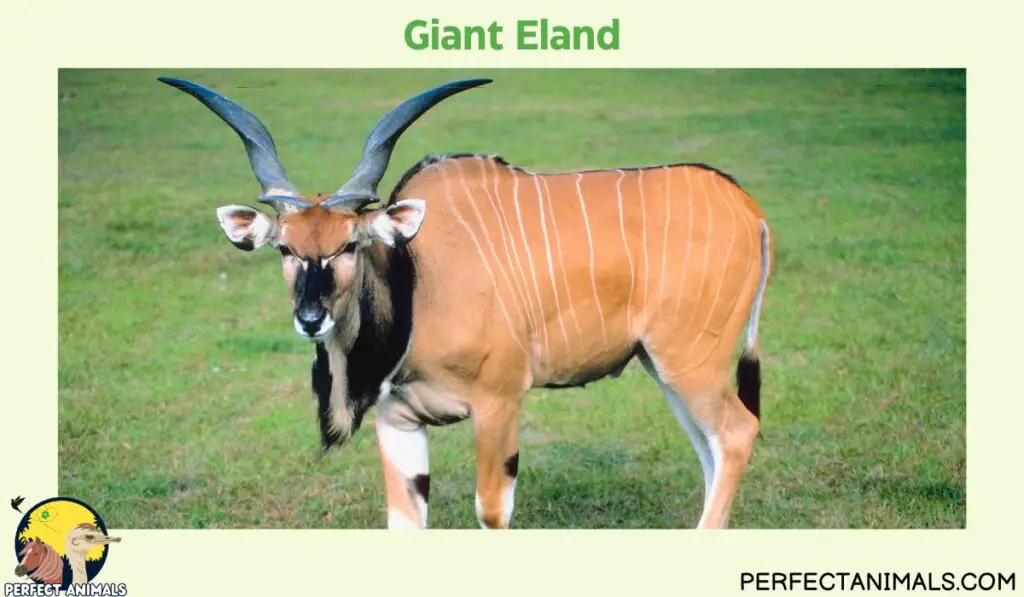
Giant elands live in herds of up to 30 members moving between grazing areas seasonally.
Dominant mature males wield their thick, tightly wound horns to establish status by rearing and neck wrestling with rivals during breeding season fights.
Their grand horns also provide defense against lions and spotted hyenas.
Despite the giant eland’s imposing size, its populations remain at risk from habitat loss and poaching fueled by the bushmeat trade.
Safeguarding their forest strongholds offers protection so future generations can continue to behold their magnificent horns gracing Africa’s woodland scenes.
Alpine Ibex
The Alpine ibex elegantly traverses steep European mountain cliffs with sweeping horns extending over 50 inches long.
These curved horns twist backward close to an ibex’s head before flaring outwards, continually growing in layers throughout their lifespan.
Alpine ibex males brandish the most impressively large, scimitar-shaped horns.
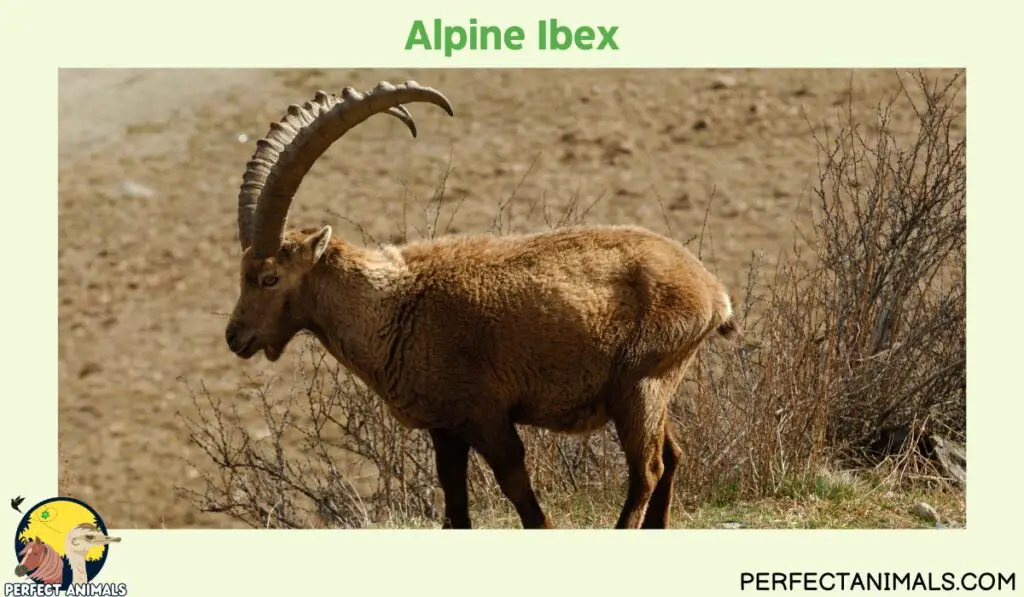
They rely on these horns when battling rivals by crashing them together to gain status and mating privileges.
Females boast petite horns in comparison.
Yet both genders wield horns to defend against golden eagles, wolves, bears, and lynx while navigating treacherous terrain with superior dexterity.
Historical overhunting greatly endangered Alpine ibex.
Now strict protections allow managed hunting, supporting the ibex population’s gradual recovery on the metamorphic peaks They remain specially adapted through unique evolutionary traits for surviving in extreme, sublime habitats.
Addax
The Critically Endangered addax stands out in Africa’s Saharan deserts with its bright white coat and long twisted horns that coil multiple times.
Males flaunt bigger horns than females, spanning over 40 inches long. After maturity, a male’s horns continue growing steadily outwards in corkscrew formations unique to each addax.
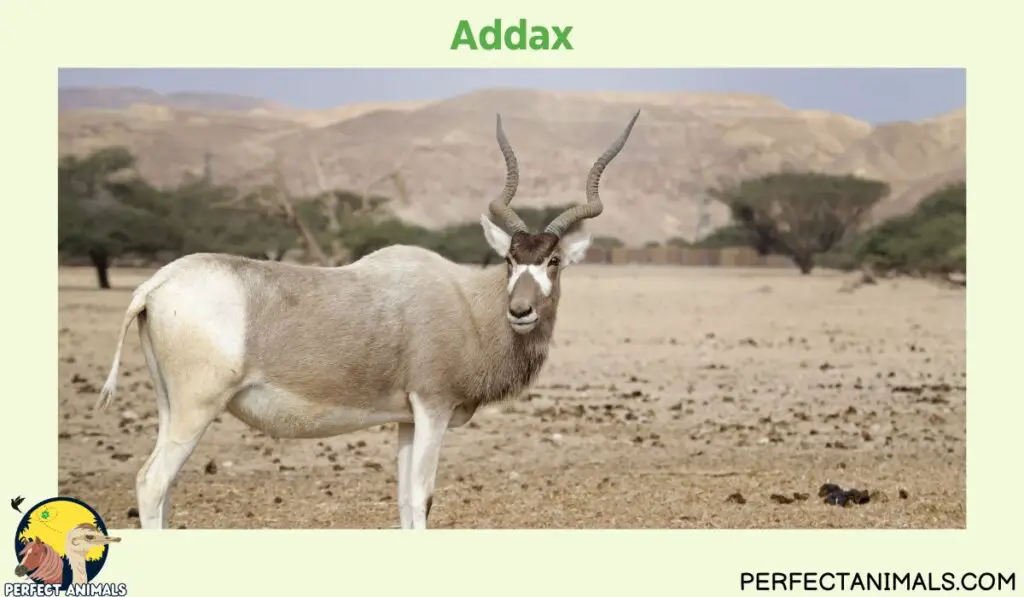
Sparring among males establishes a hierarchy for leading herds to grazing areas and securing mates in this harsh environment.
Both genders also wield horns fending off desert-dwelling foes like jackals, hyenas, and humans.
Sadly, unchecked hunting for meat, hides and their singular horns decimated addax populations.
However, successful breeding programs and antitracking efforts now work to return addax to protected wild habitats across North Africa.
Revival of the addax symbolizes restoring the balance between humanity and the natural world.
Bharal
The surefooted bharal or Himalayan blue sheep adeptly climbs towering peaks across Central Asia.
Its sweeping horns curve elegantly back along males’ sides, sometimes exceeding 40 inches long.
Females grow much smaller horns.
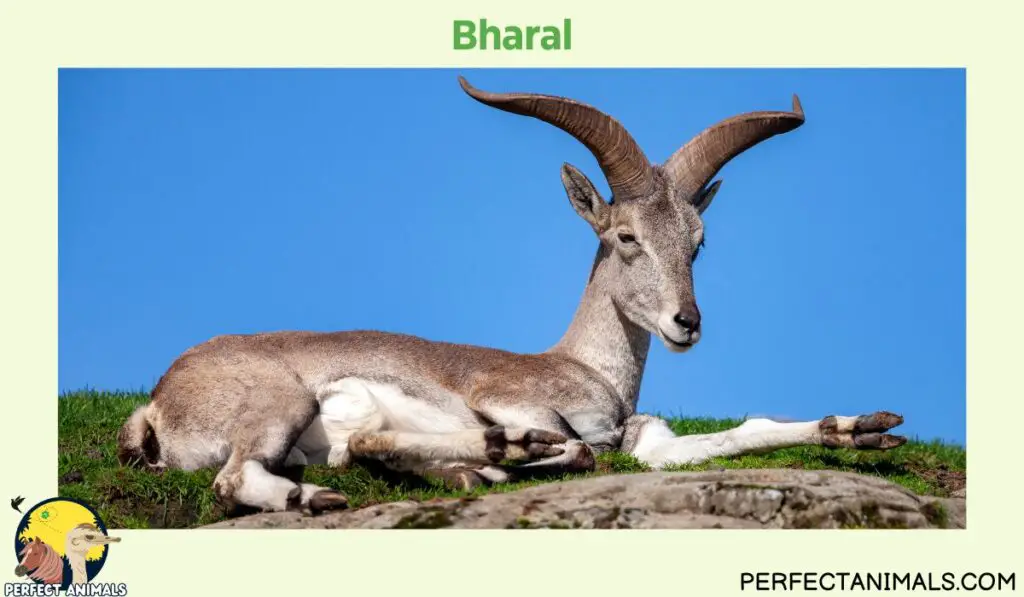
Bharal horns supply self-defense on precipitous slopes from snow leopards, wolves, lynxes, and even golden eagles.
Males leverage their horns battling opponents for high-altitude grazing range to attract breeding females.
Yet cooperation persists more than conflict in these mountain societies.
Banding together aids group safety for all during grueling seasonal migrations tracking grass growth vertically between elevations.
Careful monitoring helps stabilize vulnerable bharal populations suffering ongoing threats from habitat disturbances, livestock diseases, and climate shifts.
Upholding the Bharal’s future remains intertwined with conserving whole fragile mountain ecosystems.
Bison
The iconic American bison stands out on the Great Plains with its massive shoulder hump and short, sharp black horns.
Both male and female bison carry horns, but bulls grow bigger, more imposing horns spanning over 2 feet tip to tip.
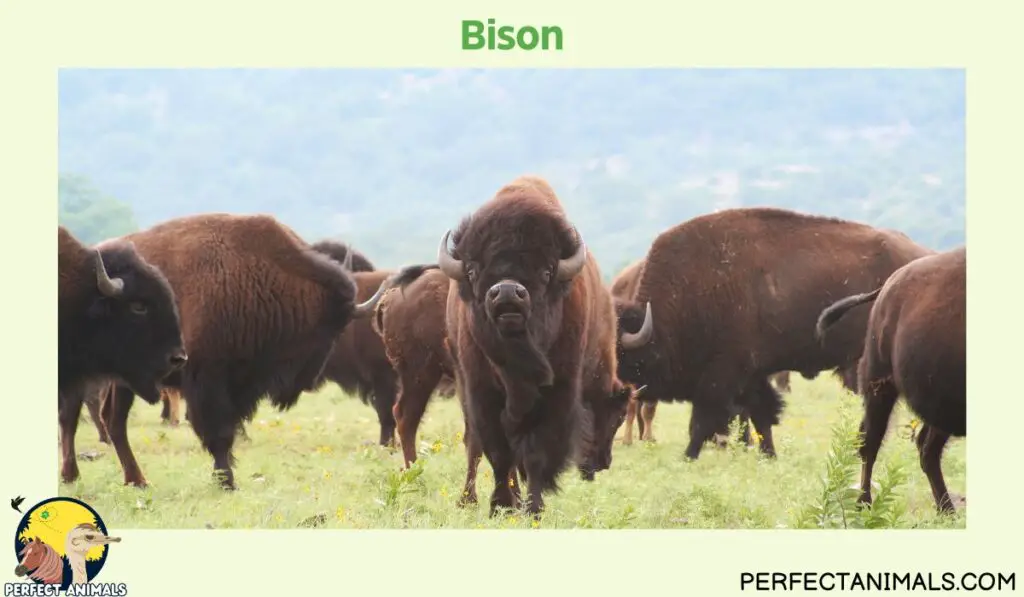
Bison utilize horns for defense, dominating other herd members, and battling opponent bulls during the rut.
Combatants collide horns while charging at 35 mph. T
heir thick horns and neck muscles absorb tremendous impacts from these violent clashes.
Fortunately, bison herds rebounded after nearing extinction thanks to conservation work establishing protected lands like national parks and private ranches dedicated to maintaining healthy, genetically diverse populations of these enduring symbols of the American West.
Nubian Ibex
The Nubian ibex gracefully scales steep, craggy cliffs of Middle Eastern deserts brandishing almost comically giant curved horns.
Their horns grow continuously in the shape of open loops bowing backwards then down along their bodies.

Mature males sport the most arresting horns reaching over 3 feet long.
Both sexes bear horns to fend off predators like Arabian wolves, striped hyenas, caracals, and golden eagles.
However, males primarily wield horns when vying for mating rights.
They smash massive horns together in forceful clashes aimed at wearing down less hardy contenders.
Conservation challenges including widespread hunting and loss of habitat once drastically reduced Nubian ibex populations.
Yet, strengthened protections now expand populations secured among remote mountains and nature reserves.
Scimitar-Horned Oryx
The scimitar-horned oryx carved a niche in North Africa’s deserts with horns remarkably ringed, straight, and saber-like.
Their brown-and-white coats and dark stripe patterns camouflage them amid dunes and dry grasslands.
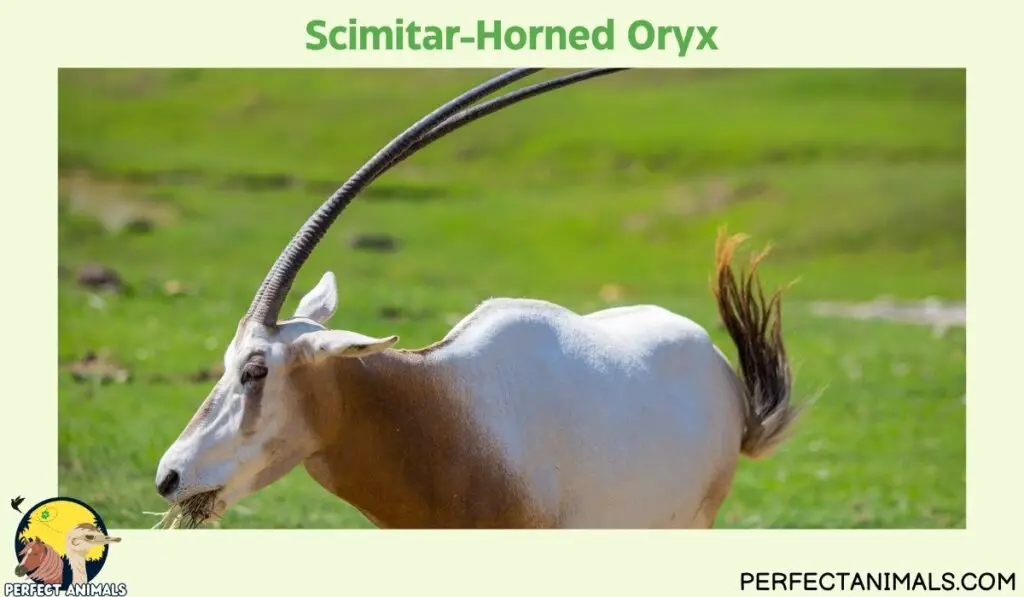
At maturity, oryx horns extend 4 feet long.
They slash rivals with these tapered sabers during territorial displays or fighting.
Their horns also make formidable weapons driving off desert-dwelling threats like lions, hyenas, jackals, and humans.
Tragically the oryx is now Extinct in the Wild from past unchecked trophy hunting and habitat loss.
However, captive breeding programs succeed in boosting scimitar-horned oryx numbers for future reintroduction.
Restoring these icons’ hidden beauty back into balanced Saharan ecosystems remains an important symbolic goal.
Final Thoughts
The animal kingdom contains an incredible diversity of curled and twisted horns adapted for defense, fighting rivals, and more.
We explored only a sample, yet these species exemplify nature’s wondrous capabilities for evolving unique structures matching animals to their environments.
Sadly, many horned animals now face increasing threats from habitat loss, hunting, and climate change.
Their futures remain uncertain. While some populations revive under focused conservation, other species slide closer to extinction.
Protecting these animals protects vital connections to wilderness and healthy ecosystems benefiting all life on Earth.
If lost, intricate horns may one day be known only from photos.
However, balancing human needs and wildlife conservation can still preserve horned species in the wild.
This will require a long-term vision weighing whole-system costs against short-term economic gains. The choice lies before us all now.
With care and responsibility, iconic animals with fantastic horns can continue roaming wild lands as they have for ages past.
Their reemerging numbers will allow new generations to marvel at nature’s majesty born again with each curled horn tracing the sky.
Resources – (for further reading)
Wikipedia – Markhor, Mouflon, Bighorn sheep
Britannica – Kudu | African Antelope, | Sable antelope | Addax
Animal Diversity Web – ADW: Pseudois nayaur

Sarah has years of experience working as a zookeeper. She has cared for a wide variety of animals, from primates to big cats. Her passion for animals extends beyond her profession, as she dedicates her free time to writing about wildlife and their conservation.
